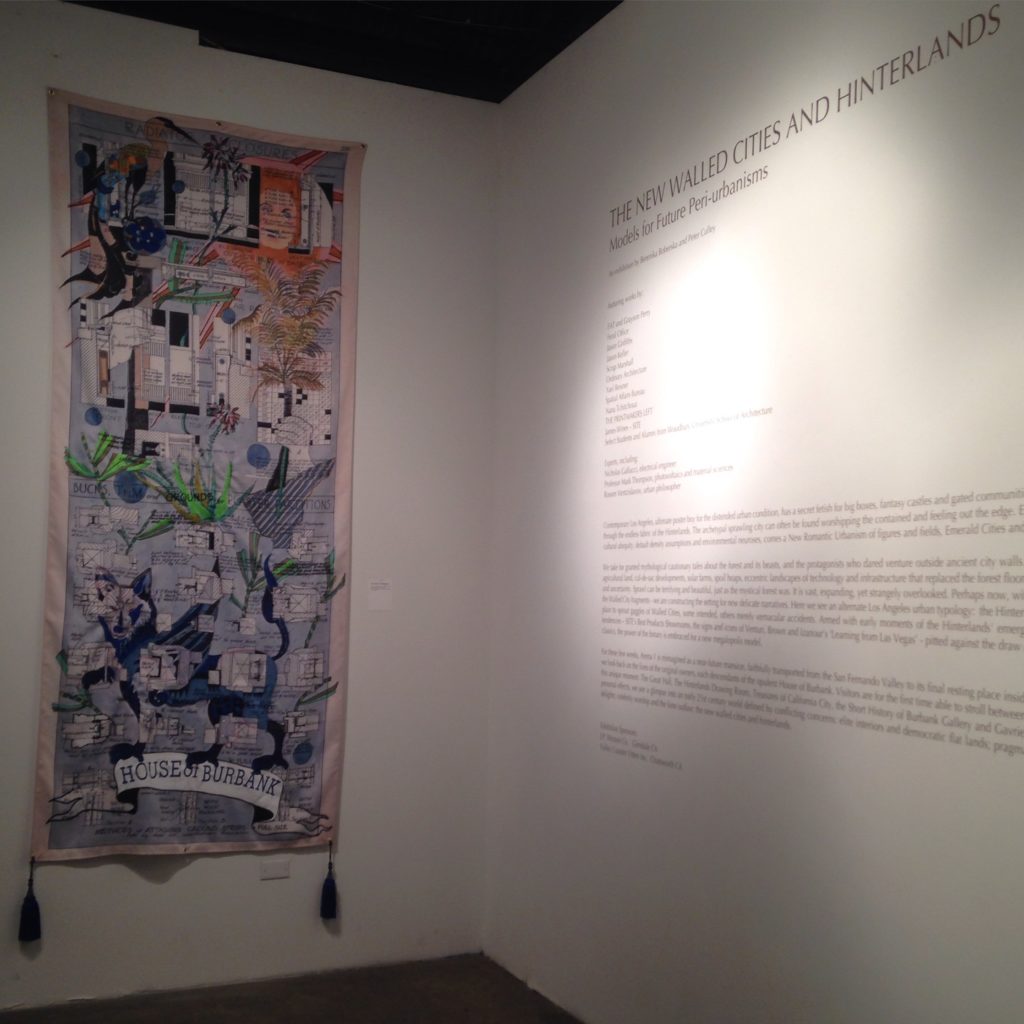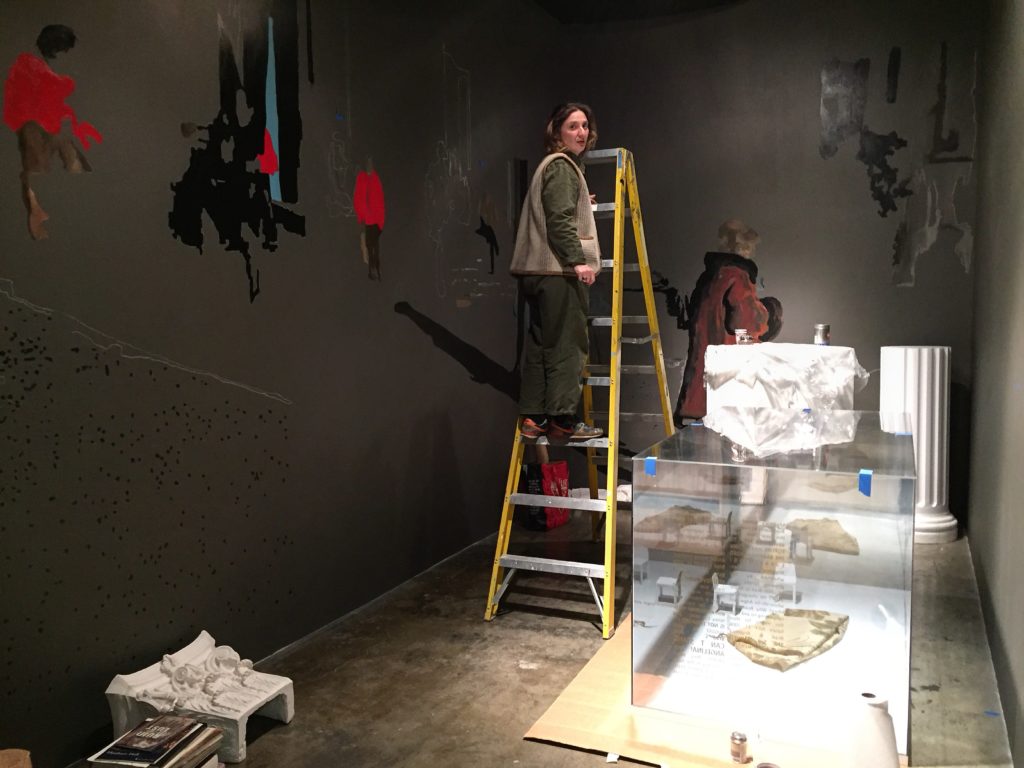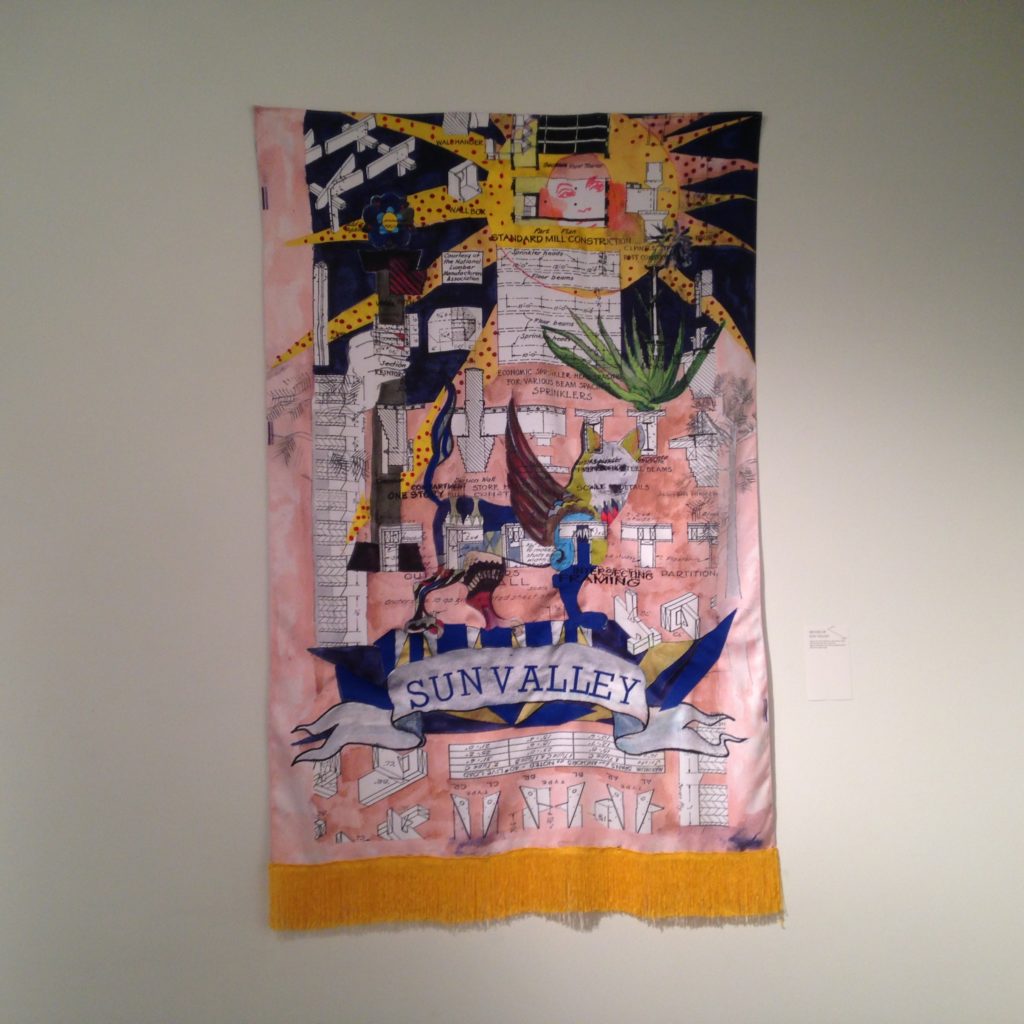
Woodbury School of Architecture professors Berenika Boberska and Peter Culley present an exhibition with various contributors at the Arena 1 Gallery, a project of Santa Monica Art Studios. The New Walled Cities and Hinterlands – Models for Future Peri-urbanisms runs from February 20 until March 19, 2016, with a celebration of the exhibit at Arena 1 on March 12, from 5pm – 8pm.
Contemporary Los Angeles, ultimate poster boy for the distended urban condition, has a secret fetish for fixed big boxes, fantasy castles and gated communities. Fragments of medieval echoes appear through the endless fabric of the Hinterlands. The archetypal sprawling city can often be found worshipping the contained and feeling out the edge. Emerging against a backdrop of flat–lining cultural ubiquity, default density assumptions and environmental neuroses, comes a New Romantic Urbanism of figures and fields, Emerald Cities and flowering asphalt.
ARENA 1
A project of Santa Monica Art Studios
3026 Airport Avenue
Santa Monica, CA 90405

We take for granted mythological cautionary tales about the forest and its beasts, and the protagonists who dared venture outside ancient city walls. But now, in the modern Hinterlands of agricultural land, cul-de-sac developments, solar farms, spoil heaps, eccentric landscapes of technology and infrastructure that replaced the forest floor, we can find a new poetry of wilderness and uncertainty. Sprawl can be terrifying and beautiful, just as the mystical forest was. It is vast, expanding, yet strangely overlooked. Perhaps now, with the aid of isolated intense containers – the Walled City fragments – we are constructing the setting for new delicate narratives. Here we see an alternate Los Angeles urban typology: the Hinterlands embraced in a poetic light, a fertile plain to sprout gaggles of Walled Cities, some intended, others merely vernacular accidents. Armed with early moments of the Hinterlands’ emerging self-consciousness and exhibitionist tendencies – SITE’s Best Products Showrooms, the signs and icons of Venturi, Brown and Izanour’s ‘Learning from Las Vegas’ – pitted against the draw of the brooding internalized Walled City classics, the power of the binary is embraced for a new megalopolis model.
For these few weeks, Arena 1 Gallery is reimagined as a near-future mansion, faithfully transported from the San Fernando Valley to its final resting place inside this old aircraft hangar. It is 2027, and we look back on the lives of the original owners, each descendants of the opulent House of Burbank. Visitors are for the first time able to stroll between five key rooms opened to the public for this unique moment: The Great Hall, The Hinterlands Drawing Room, Treasures of California City, the Short History of Burbank Gallery, and Gavrieli’s Library. Through the display of their personal effects, we see a glimpse into an early 21st century world defined by conflicting concerns: elite interiors and democratic flat lands; pragmatic modern technologies and old-world delights; celebrity worship and the lone outlaw; the New Walled Cities and Hinterlands.
“The exhibition is an important next step for us, following the presentation of our paper of the same title at the Changing Cities II conference in Greece last summer. It has allowed a synthesis of various strands of personal and practice work with our teaching across multiple classes at Woodbury University,” said Boberska and Culley.

Contributors: FAT and Grayson Perry; Feral Office; Jason Griffiths; Scrap Marshall; Ordinary Architecture; Yael Reisner; Spatial Affairs Bureau; Nana Tchitchoua; THE PRINTMAKERS LEFT; James Wines – SITE; Select Students and Alumni from Woodbury University School of Architecture, including Bahar Abedi, Alenoush Aghaganians, Kader Al Swaidan, Ahmed Baageel, Jesse Cabildo, Monica Claudio, Amanda Clay, Ana Del Longo-Silberstein, Kira Dong, Elizabeth Fernandez, Edda Figueroa, Andre Gharakhanian, Rodrigo Gonzalez, Wassem Hawary, Ken Hong, Shweta Joshi, Laura Kazmierczak, Hooman Kia, Mauricio Pensamiento, Alán Manning, Kirsten Meza, Nooshin Moosavi, Husam Murad, Jonathon Raya, Jorge Ruiz, Azadeh Sadrieh, Aygun Sanchez, Karla Solis, Julius Taniguchi, Vaheh Vartanian; experts including: Nicholas Gallucci, electrical engineer; Professor Mark Thompson, photovoltaics and material sciences; Rossen Ventzislavov, urban philosopher; Roland Wahlroos-Ritter, pilot.
The exhibition is generously sponsored and supported by J.P. Weaver Co., Glendale CA; Valley Counter Fitters Inc, Chatsworth CA; Advanced Foam, Gardena; Gavrieli Plastics; NanoFlex Power Corporation; Mark Thompson Laboratories, USC; McIntire Department of Art, University of Virginia; Woodbury School of Architecture.
